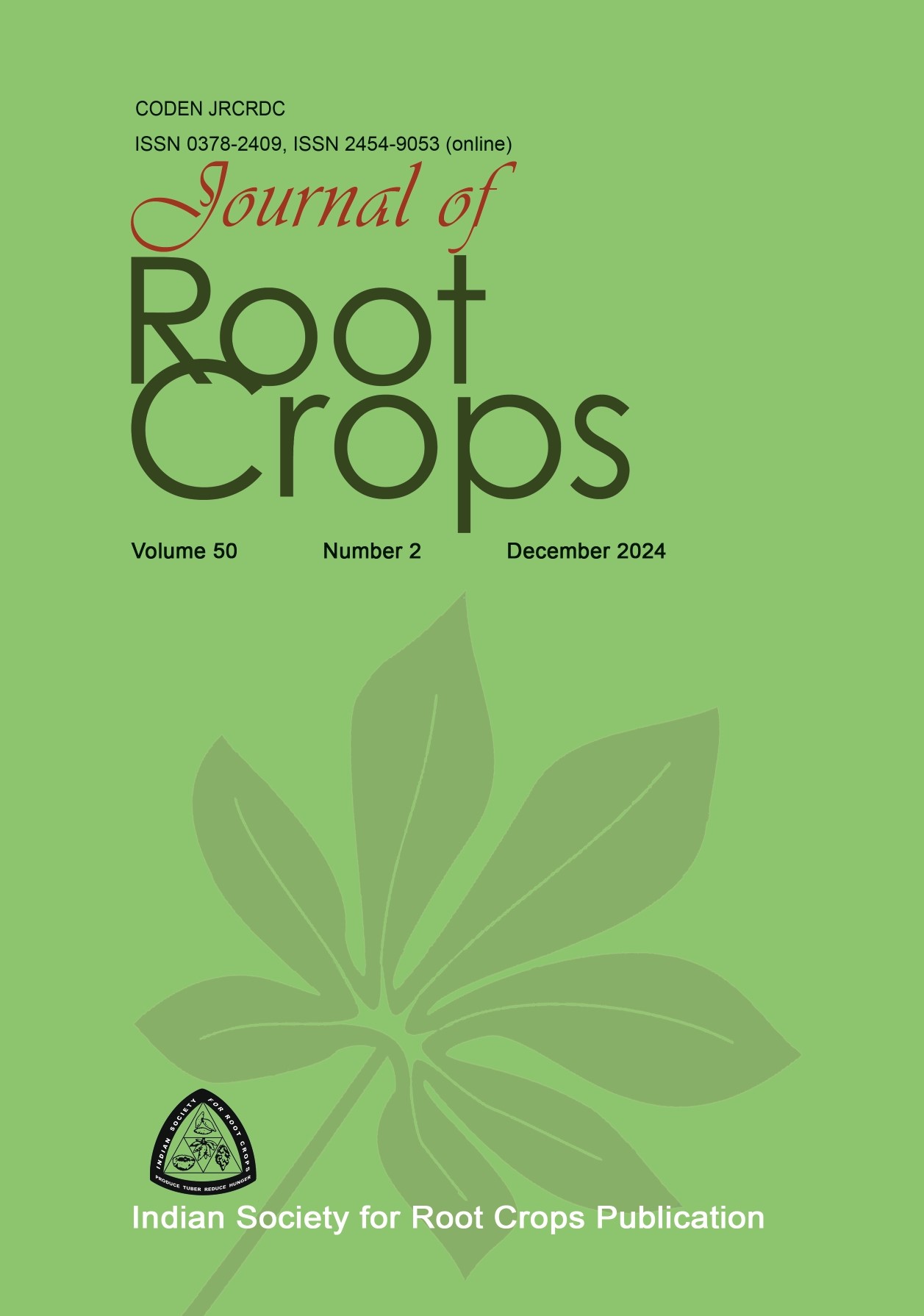Collar rot of elephant foot yam (Amorphophallus paeoniifolius): pathogen biology, detection, and management strategies – A review
Abstract
AbstractTuber crops are increasingly recognized as important food security crops due to their resilience,adaptability, and contribution to household nutrition. Their cultivation is gaining popularity not onlybecause of their growing acceptance for culinary use but also for the income they generate for smallholder and commercial farmers alike. Among tropical tuber crops, elephant foot yam (Amorphophallus paeoniifolius) stands out as both a food security crop and a remunerative cash crop, especially in tropical and subtropical regions. However, the productivity and sustainability of elephant foot yam cultivation are significantly threatened by several diseases, primarily those caused by fungi and viruses. Notably,collar rot, mosaic, and leaf blight are the major diseases affecting elephant foot yam, with collar rot being the most common and devastating. Collar rot, caused by the soil-borne fungal pathogen Sclerotium rolfsii Sacc., leads to severe losses by attacking all stages of crop growth. Infections at the early vegetative phase can be particularly destructive, often resulting in total crop failure. The persistence of the pathogen in the form of hardy sclerotia and its broad host range complicate its management. The integrated disease management (IDM) strategy, which involves interventions from pre-storage through post-planting stages, has emerged as the most effective approach for combating S. rolfsii. Cultural practices, chemical treatments, bio-control agents, and organic amendments must be used in synergy to mitigate disease pressure and ensure yield stability. This review provides a comprehensive overview of collar rot disease in elephant foot yam, discussing the biology of the pathogen, symptomatology, disease epidemiology, and the economic impact, while highlighting advances in management practices, including cultural, chemical, biological, and integrated strategies. Keywords: Elephant foot yam, Collar rot, Sclerotium rolfsii, Trichoderma, Integrated Disease ManagementDownloads
Published
How to Cite
Issue
Section
License
Dear Author(s)
We need your written permission before we can publish your accepted article in the Journal of Root Crops. Please read this form carefully, complete it and palace your signature below. A scanned copy of this form may be mailed to us within two days of receipt of this letter. Our email ID is: isrc_ctcri@yahoo.com or editor_jrc@yahoo.com or sreekumarctcri@gmail.com
Details:
In consideration of the publication in the Journal of Root Crops of our contribution entitled
(Name of the paper): .................................................................................................................
.................................................................................................................................................... by us (all Authors’ names) ..........................................................................................................
....................................................................................................................................................
A. To be filled in if copyright belongs to you
I/we hereby assign to Indian Society for Root Crops, Thiruvananthapuram, India, the full copyright in all forms and media in the said contribution, including open/ restricted access to online version. They own the rights to freely grant or distribute the paper to any third party or public
Please tick this box if you are the sole author of the paper
Please tick this box if you are authorised to execute this copyright transfer on behalf of all the authors of the above article
Name (block letters): . . . . . . . . . . . . . . . . . . . . . . . . . . . . . . . . . . . . . . .......
Institution/Company:..................................................................................................................
....................................................................................................................................................
Signature:.....................................................................; Date: ....................................................
B. To be filled in if copyright does not belong to you
1. Name and address of copyright holder:................................................................................
........................................................................................................................................................................................................................................................................................................
2. The copyright holder hereby grants Indian Society for Root Crops, Thiruvananthapuram, India the full copyright in all forms and media in the said contribution, including open/ restricted access to online version. They own the rights to freely grant or distribute the paper to any third party or public.
(Signature of copyright holder or authorised agent)





